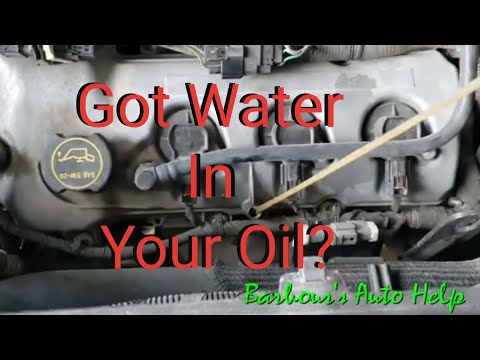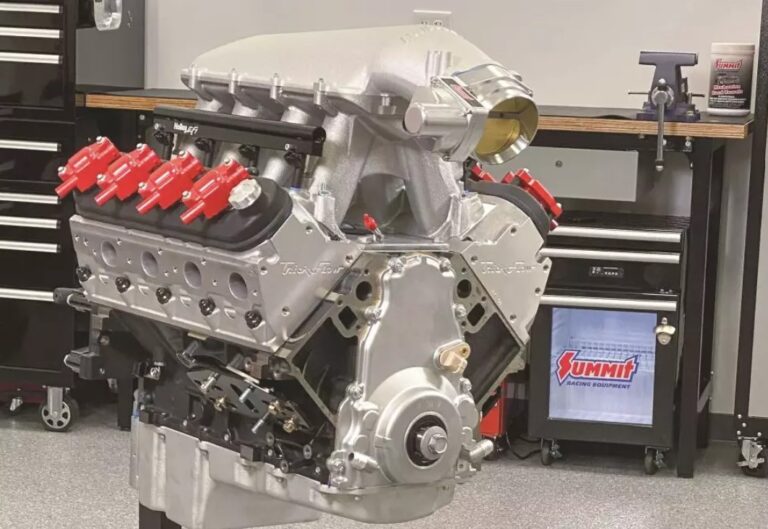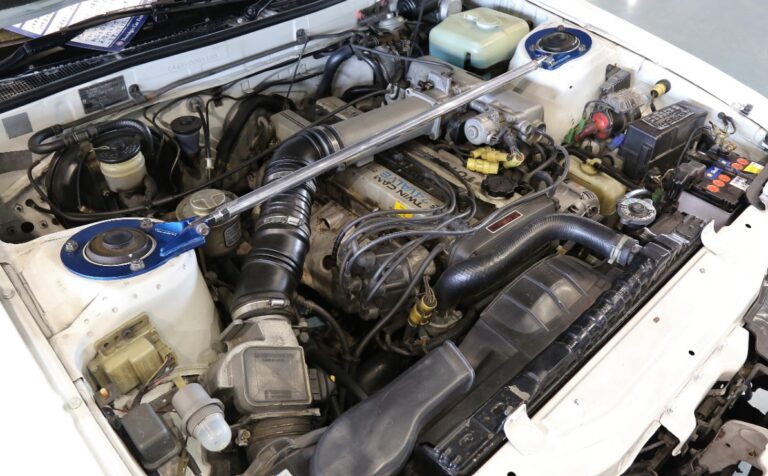How To Fix Water In Engine Oil? Fix In 10 Steps
This article will explain How To Fix Water In Engine Oil? Discovering water in engine oil can be a daunting challenge for any vehicle owner. It’s a problem that demands immediate attention, as it can lead to severe engine damage if not addressed promptly. Understanding the causes and solutions is crucial for maintaining your vehicle’s health and performance.
Key Takeaways
- Identifying the Problem: Look for milky oil on the dipstick or under the oil cap.
- Common Causes: Blown head gasket, cracked engine block, or condensation.
- Fixing the Issue: Drain and replace oil, repair or replace damaged parts.
- Preventive Measures: Regular maintenance, and monitoring of coolant levels.
- Seeking Professional Help: Consult a mechanic for complex issues.
How To Fix Water In Engine Oil?
Fixing water in engine oil is a crucial process that involves several detailed steps. The procedure must be carried out with precision to ensure the longevity and proper functioning of the engine. Here’s a comprehensive guide:

- Identify the Presence of Water in the Engine Oil:
- Check the oil via the dipstick. If the oil appears milky or frothy, it’s a sign that water has mixed with the oil.
- Notice other symptoms like white smoke from the exhaust, an overheated engine, or a drop in engine performance.
- Stop Using the Vehicle:
- Cease operating the vehicle immediately. Running the engine with water in the oil can cause severe damage.
- Drain the Contaminated Oil:
- Warm up the engine slightly to make the draining process easier (if safe to do so).
- Place a container under the oil pan and remove the drain plug, allowing the contaminated oil to flow out.
- Replace the drain plug once all the oil has been drained.
- Replace the Oil Filter:
- Remove the old oil filter, as it may contain water and contaminants.
- Install a new oil filter, ensuring it’s properly seated and secured.
- Refill with New Engine Oil:
- Using the correct type and grade of oil for your vehicle, refill the engine with fresh oil.
- Check the oil level with the dipstick to ensure the proper amount is added.
- Identify and Fix the Root Cause:
- Investigate common causes such as a blown head gasket, a cracked engine block, or issues causing condensation.
- Conduct pressure tests or use diagnostic tools to pinpoint the issue.
- Repair or replace the faulty component (e.g., a new head gasket or welding a crack in the engine block).
- Check the Cooling System:
- Inspect the cooling system for leaks or failures that could allow coolant to enter the oil system.
- Repair or replace any faulty components in the cooling system.
- Run and Monitor the Engine:
- Start the engine and let it reach its normal operating temperature.
- Monitor for leaks, abnormal noises, or overheating.
- Check the oil again to ensure no new water contamination is occurring.
- Seek Professional Help if Necessary:
- If you’re unable to identify or fix the issue, or if the engine is still showing signs of trouble, consult a professional mechanic.
- Complex problems like a cracked engine block might require specialized skills and equipment.
- Preventive Maintenance:
- Regularly check and maintain the oil and cooling system to prevent future occurrences.
- Regular oil changes, using the right oil, and keeping the cooling system in good condition are key to prevention.
Each step in this process is critical. Skipping a step or not thoroughly completing it can lead to the problem recurring or causing further damage to the engine. If you’re unsure about any part of the process or if the issue is beyond basic fixes like changing oil, it’s best to seek professional assistance.
Identifying Water in Engine Oil
Water in your engine oil can manifest in several ways. The most common sign is a milky, frothy appearance on your dipstick or under the oil cap. This happens when water and oil mix, creating an emulsion. Other indicators include overheating, steam from the exhaust, and a decrease in engine performance.
Understanding the Signs
- Milky Oil: Indicates the presence of water in oil.
- Overheating: Caused by a reduction in the oil’s lubricating properties.
- Steam from Exhaust: A symptom of coolant entering the combustion chamber.
Common Causes of Water in Engine Oil
The primary culprits behind water mixing with engine oil are typically a blown head gasket, a cracked engine block, or condensation within the engine.
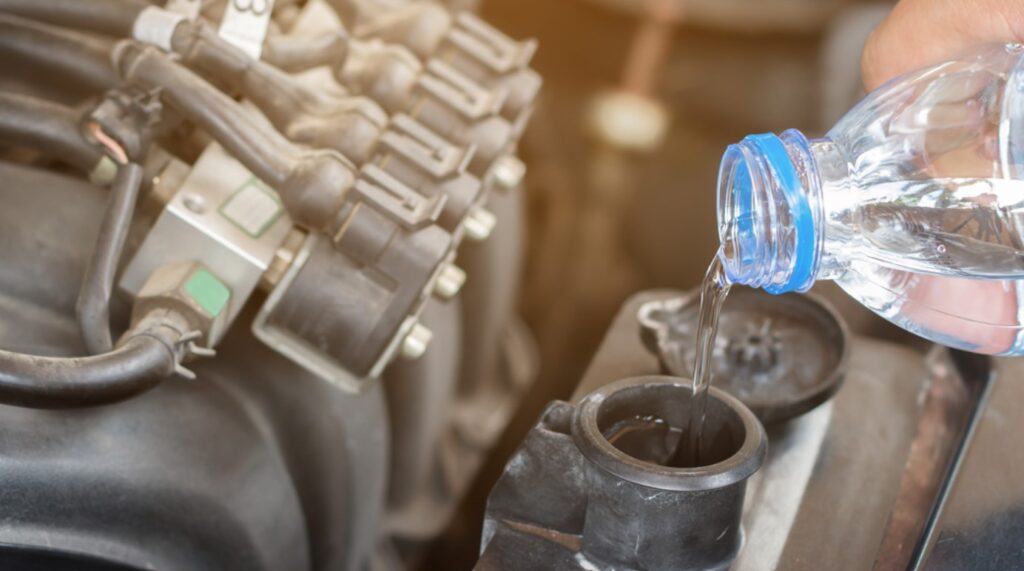
Blown Head Gasket
A blown head gasket can allow coolant to seep into the engine’s oil passages. This problem is often due to engine overheating or wear and tear.
Cracked Engine Block
A cracked engine block, although less common, is a more severe issue. It can lead to significant engine damage and often requires extensive repairs or replacement.
Condensation
Condensation can occur in the engine, especially in cold climates. Short trips that don’t allow the engine to reach its optimal operating temperature can exacerbate this issue.
Steps to Fix Water in Engine Oil
Addressing the problem involves several steps, starting with draining the contaminated oil.
Draining Contaminated Oil
Remove all the contaminated oil from the engine. This includes changing the oil filter, as it can also hold water.
Inspecting for Damage
Inspect for any damage to the engine components, such as the head gasket or engine block. Use diagnostic tools or seek professional assessment.
Preventive Measures
To prevent water from entering your engine oil, regular maintenance is key. This includes monitoring coolant levels and ensuring the engine reaches its proper operating temperature.
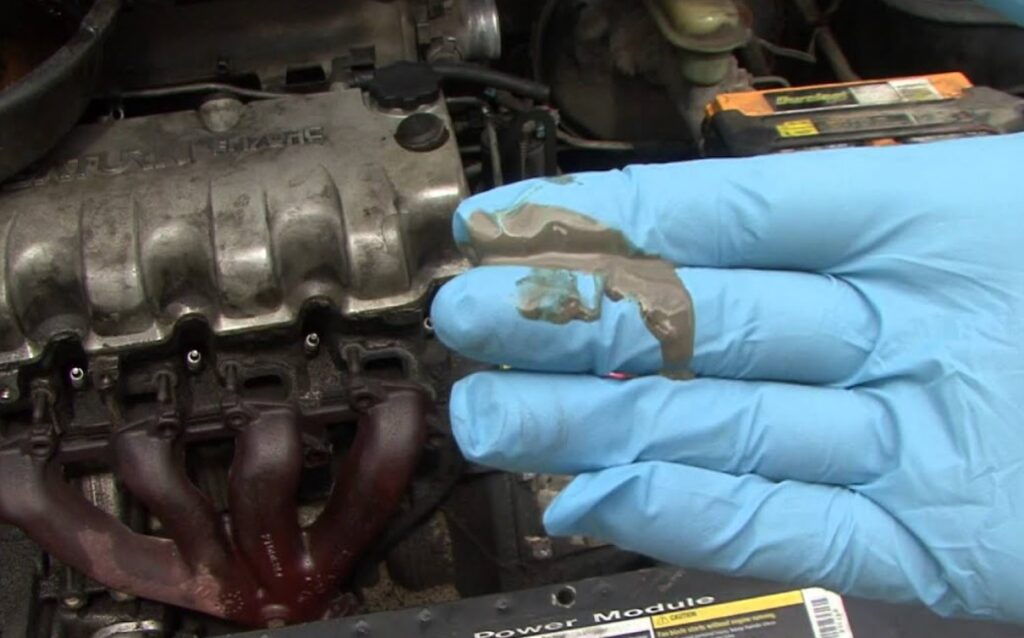
Regular Maintenance
Regular oil changes and coolant system checks can prevent many issues related to water in engine oil.
Monitoring Coolant Levels
Keeping an eye on your coolant levels can help detect a head gasket or engine block issue early.
Seeking Professional Help
For complex issues like a cracked engine block or a blown head gasket, it’s advisable to seek help from a professional mechanic.
Consulting a Mechanic
A qualified mechanic can accurately diagnose and repair serious issues, preventing further damage to your engine.
What Is The Problem If There Is Water In Your Oil?
When water mixes with your engine oil, it creates a host of issues. The primary concern is that water dilutes the oil, diminishing its lubricating properties. This leads to increased friction and wear on engine components, potentially causing damage to bearings, pistons, and other vital parts.
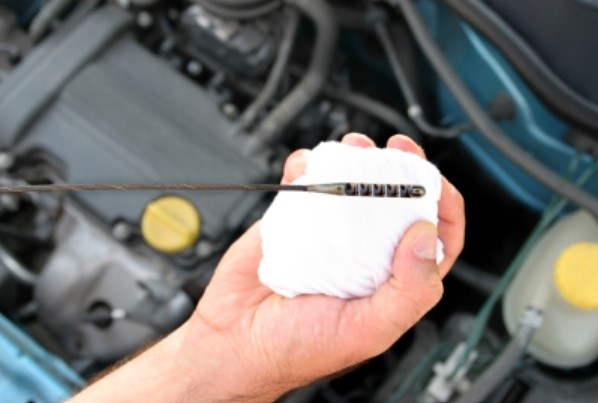
Moreover, the presence of water can lead to the formation of corrosive by-products, further harming the engine. Additionally, water in the oil can cause the engine to overheat, as the oil fails to efficiently absorb and dissipate heat.
What Should I Do If I Get Water In My Engine Oil?
If you find water in your engine oil, the first step is to stop using your vehicle to avoid further damage. The next step is to identify the source of the water. Common causes include a blown head gasket, cracked engine block, or condensation.
After identifying the cause, the water-contaminated oil should be completely drained and replaced with fresh oil, along with a new oil filter. If the problem is due to a mechanical issue like a blown head gasket, it must be repaired before the vehicle is used again.
How Do You Get Water Out Of Oil?
Removing water from engine oil involves draining the contaminated oil from the engine. This process includes replacing the oil filter, as it can also contain water and contaminants. After draining, the engine should be refilled with new, high-quality oil.
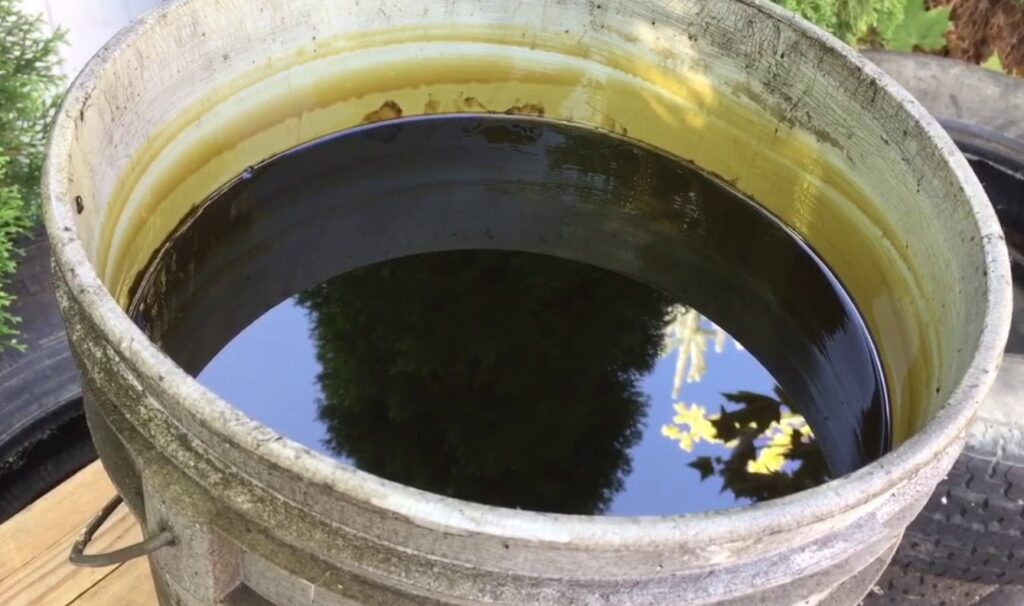
It’s important to note that simply draining the oil may not fix the underlying problem that caused water to enter the oil in the first place. Therefore, addressing the root cause, such as fixing a blown head gasket or sealing a crack in the engine block, is crucial.
How Do You Fix Engine Oil Mixing With Water?
Fixing the issue of engine oil mixing with water requires a two-fold approach. First, address the immediate problem by draining the contaminated oil and replacing it with fresh oil and a new oil filter. Second, identify and fix the root cause of the water ingress.
This may involve repairing or replacing a faulty head gasket, sealing cracks in the engine block, or addressing issues that lead to condensation. In severe cases, professional assessment and repair might be necessary.
Is There An Additive To Get Water Out Of Oil?
Currently, there are no additives that can effectively and safely remove water from engine oil in a running engine. While certain products claim to address moisture in oil, their effectiveness is limited and not recommended for use in internal combustion engines.
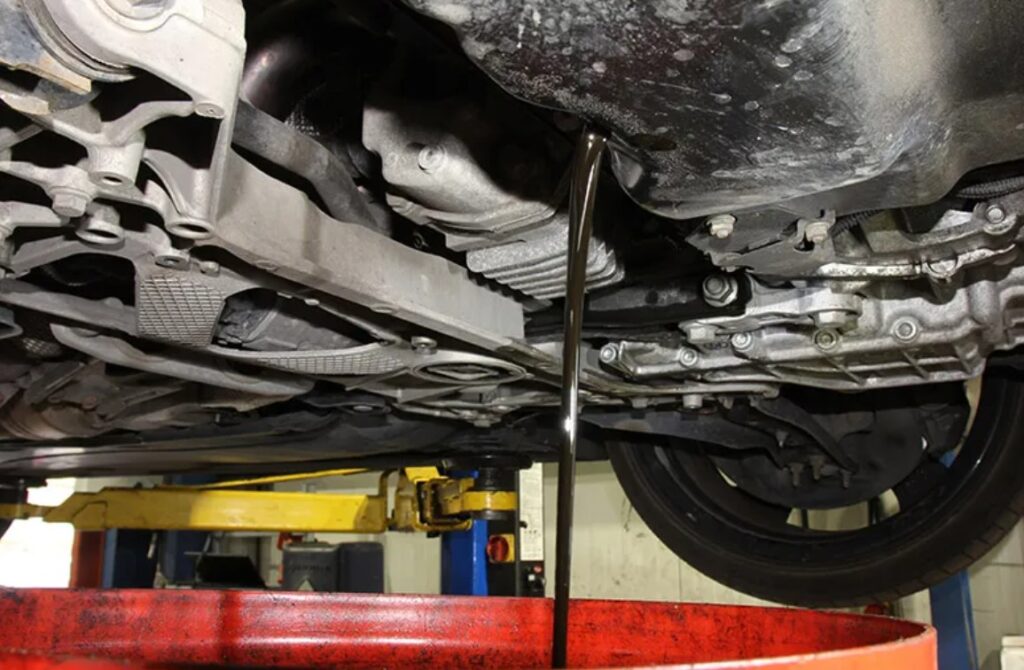
The best solution to water contamination in engine oil is to drain the contaminated oil and replace it with fresh oil. Using additives as a shortcut can lead to inadequate resolution of the problem and potentially cause further damage to the engine.
Conclusion
Addressing the issue of water in engine oil is crucial for the longevity and performance of your vehicle. Early detection, understanding the causes, and taking preventive measures can save you from costly repairs. In complex cases, seeking professional advice is the best course of action. Remember, regular maintenance is your first line of defense in keeping your engine healthy.
Top FAQ’s
How much does it cost to fix water in engine oil?
The cost varies depending on the underlying cause and the extent of the damage. Simple fixes like replacing the oil and filter can be relatively inexpensive. However, repairing or replacing major components like a head gasket or engine block can be costly, potentially running into thousands of dollars.
How do mechanics diagnose water in engine oil?
Mechanics diagnose water in engine oil by checking for milky, frothy oil on the dipstick or under the oil cap. They also use diagnostic tools to check for blown head gaskets, cracks in the engine block, or other issues. Additional diagnostics might include pressure testing the cooling system and inspecting the engine for leaks.
Can a car run with water in the oil?
A car can run with water in the oil, but it’s not advisable. Running a vehicle in this condition can lead to reduced lubrication, increased engine wear, overheating, and potentially catastrophic engine damage.
How often should I check my engine oil?
It’s generally recommended to check your engine oil at least once a month. However, if your vehicle is older, has a history of engine problems, or is used in harsh driving conditions, more frequent checks are advisable.

Matt Rex brings 12 years of specialized automotive expertise, holding a professional degree in Automotive Engineering Technology. As the founder of Turbochaos, he delivers comprehensive diagnostic services, performance optimization, and fleet maintenance solutions, backed by advanced certifications in hybrid/electric systems and ADAS technology. Its innovative methodologies have earned industry recognition while maintaining a 98% customer satisfaction rate.

